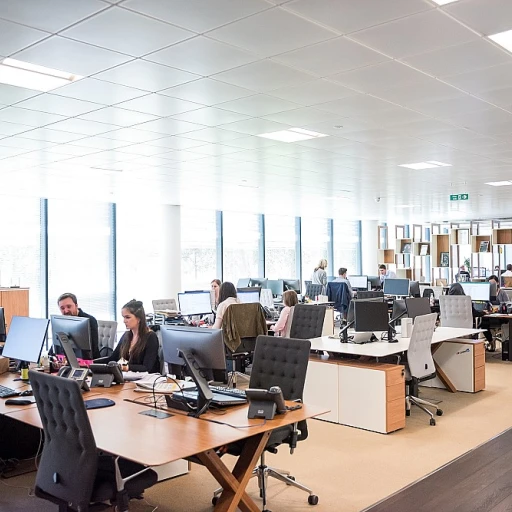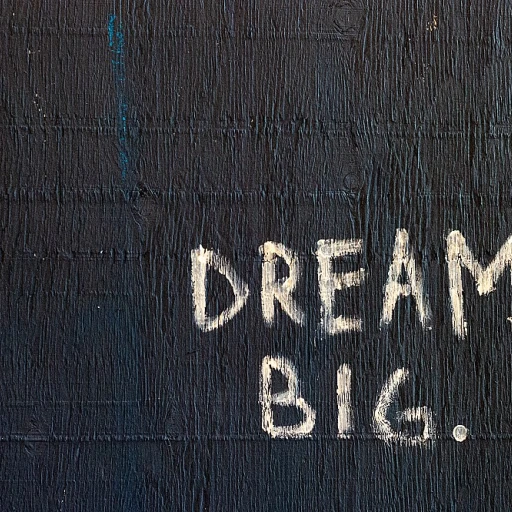
Understanding Team Dynamics
Grasping the Essence of Team Dynamics
Understanding team dynamics is crucial for anyone looking to integrate seamlessly into a new team. It involves recognizing how team members interact, communicate, and collaborate to achieve a common goal. Each team is unique, shaped by the organization’s culture, the project at hand, and the individual personalities of its members. By observing these interactions, you can gain valuable insights into the team's work processes and how best to contribute.
When teams work together effectively, they can complete tasks more efficiently and foster a shared vision. This is especially important in scenarios involving mergers and acquisitions, where merging teams can face challenges in aligning their goals and practices. In such cases, understanding the dynamics will allow you to navigate the complexities of merging teams and contribute positively to the organization.
Consider the following strategies to improve team integration:
- Observe and Learn: Spend time observing how team members communicate and collaborate. This will help you understand the existing knowledge base and best practices.
- Engage in Knowledge Sharing: Actively participate in knowledge sharing sessions to build rapport and demonstrate your willingness to contribute to the team’s success.
- Align with Team Leads: Regularly communicate with team leads to ensure you are moving in the right direction and aligning with the team's objectives.
By focusing on these aspects, you can better understand the dynamics at play and position yourself as a valuable team member. For more insights on navigating complex team environments, consider exploring favoritism in the workplace and how it might affect team dynamics.
Building Rapport with Colleagues
Fostering Positive Relationships
Building rapport with colleagues is crucial for a smooth transition into any team. Establishing a connection with team members not only enhances collaboration but also contributes to a more enjoyable work environment. Here are some strategies to help you get started:
- Engage in Active Listening: When team members share their thoughts or experiences, give them your full attention. This will allow you to understand their perspectives and build trust.
- Participate in Team Activities: Whether it’s a project meeting or a casual team lunch, participating in team activities helps you get to know your colleagues better and strengthens team cohesion.
- Share Your Knowledge: Don’t hesitate to share your expertise and insights. Knowledge sharing can improve team performance and foster a culture of collaboration.
- Respect Privacy: Be mindful of personal boundaries and respect the privacy policy of your organization. This shows respect and consideration for your colleagues.
Embracing Diversity and Inclusion
In today’s diverse work environments, understanding and appreciating different backgrounds and perspectives is essential. Embracing diversity will not only enrich your experience but also enhance team performance. Here’s how you can contribute:
- Value Different Perspectives: Encourage team members to share their unique viewpoints. This can lead to innovative solutions and a more dynamic team dynamic.
- Promote a Shared Vision: Work towards a common goal by aligning your efforts with the team’s objectives. This shared vision will improve team collaboration and ensure everyone is moving in the same direction.
- Be Open to Learning: Be willing to learn from others, especially those with different experiences and backgrounds. This openness will enhance your knowledge base and contribute to personal growth.
For more insights on fostering an inclusive workplace, consider exploring recognizing age bias in the workplace.
Effective Communication Strategies
Communication Tactics that Connect
Establishing effective communication is crucial for seamless collaboration within new teams and ensuring project success. Fostering open and transparent dialogue helps bridge the gap between members team and improves the overall atmosphere within the organization. Effective communication strategies will allow teams to work more cohesively, whether it involves team leads fostering knowledge sharing or members project completing tasks together.- Encourage Open Dialogue: Creating an environment where each team member feels comfortable expressing thoughts and ideas is essential for merging teams and successful mergers. This approach enhances collaboration and ensures each employee contributes to the shared vision of the company. Open dialogue nurtures a healthy knowledge base that benefits everyone.
- Leverage Technology: In today's digital age, utilizing technology to aid communication can be a game changer. Communication platforms ensure cross-functional teams can easily share information, helping maintain the flow of knowledge across the organization.
- Regular Check-ins: Consistent meetings—whether they are daily stand-ups or weekly check-ins—ensure that everyone stays on the same page. It allows employees to share updates, align with the team’s common goal, and address any roadblocks promptly.
- Active Listening: Encourage team members to practice active listening. This involves truly hearing what others are saying, which will improve team cohesion and ensure a thorough understanding of tasks.
Adapting to Company Culture
Adapting to the Company Culture Smoothly
Navigating a new work environment involves more than understanding your job description. It requires adapting to the company's culture, which encompasses its norms, values, and, most importantly, how teams work together. Every organization has its unique way of functioning, notably reflected in how projects are managed and how employees share knowledge. Recognizing this from the outset will allow you to align your actions with the company's mission, foster better communication, and contribute effectively to the team's efforts.Experience and Knowledge Sharing One of the most effective ways to adapt is through knowledge sharing. Leveraging the collective expertise and experience of team members is crucial. Becoming an active participant in cross-team learning initiatives can deepen your understanding of the company's approach to collaboration and project completion. Consider embracing knowledge sharing platforms within the organization, like shared drives or forums, as they provide insights into the best practices your company values. Participation in such activities not only enriches your knowledge base but also strengthens team cohesion, supporting a shared vision.
Emphasizing Collaboration over Competition Encouraging collaboration over competition is crucial in adapting to a new corporate culture. Rather than seeing your fellow employees purely as contenders for resources or recognition, see them as partners in achieving the company’s common goal. A culture that prioritizes collaboration over competition tends to promote better team dynamics and higher morale, moving everyone in the same direction. Keep in mind that effective communication is the linchpin of successful collaboration. Engaging in open dialogues and being receptive to feedback from your team leads and peers promotes a respectful environment where every team member feels valued and heard.
Merging Your Individuality with the Team's Identity While integrating with the company culture, it's important not to lose your unique voice. By finding a balance between your individuality and the team's identity, you contribute to the team's strength and diversity. Allow yourself to express personal insights that can propel projects forward while embracing the established culture and values. Striking this balance can bring innovative ideas to light and prevent the stifling of creativity that can sometimes occur in strictly uniform settings. Remember, your unique experiences and perspectives enhance the team’s overall ability to tackle challenges effectively. Adapting to a company's culture is an ongoing process, continually evolving as you learn about the organization's dynamics and deepen your relationships with your team members. With time and dedication, merging into a successful collaborative environment becomes second nature.
Leveraging Feedback for Growth
Harnessing Feedback as a Gateway to Growth
Feedback isn't just a checkbox exercise, but a vital component of your professional journey in any team. In any collaborative environment, feedback allows for continuous learning and improvement, acting as a catalyst for both individual and collective success within the organization. Embracing feedback effectively opens up a wider knowledge base which in turn improves team dynamics. Critical to leveraging feedback is maintaining open communication channels where team members feel comfortable sharing their assessments and suggestions. Foster a culture of constructive feedback where employees share insights into projects and work processes, encouraging a shared vision and promoting the best practices across teams. Another aspect is the active role of team leads in integrating feedback loops that are continuous and based on mutual respect and collaboration, which enhances team cohesion despite the challenges that mergers acquisitions might bring. This proactive engagement helps teams into understanding diverse perspectives and moving direction towards common goals. To truly gain from feedback, it’s crucial to view it as an opportunity rather than a critique. A mindset focused on growth allows the team member and the team as a whole to make the most of the feedback received, helping complete tasks with improved efficiency and innovation. Consider the concept of feedback as a bridge to build stronger interactions and deeper cross-collaboration among team members. As you adapt to these practices, not only will you enhance individual performance, but you’ll also contribute significantly to the success of your organization’s teams during times of change such as mergers acquisitions.Balancing Individuality and Team Cohesion
Striking a Balance Between Individualism and Team Collaboration
Navigating your individual identity while ensuring a seamless fit into a new team can be a complex task. It's important to recognize the value you bring as an individual and how it complements the collective team effort. Here's how to maintain your uniqueness while fostering team cohesion:- Align Personal and Team Goals: Start by identifying your own professional objectives and how they align with the team’s common goal. Understanding the team's larger aim will allow you to position your contributions more effectively.
- Foster Open Communication: Share your ideas and knowledge with team members. Encourage cross-knowledge learning since it improves team performance. Open dialogue fosters transparency and trust, which are crucial during mergers and acquisitions.
- Embrace the Shared Vision: Each member of a team must work towards a shared vision set by the organization. Strive to actively participate in team projects, allowing your expertise to shine while ensuring you are moving in the team's direction. This creates an inclusive environment that values both individuality and collaboration.
- Respect Privacy and Professional Boundaries: Respect employees' privacy when discussing ideas or providing feedback. Adhering to the company's privacy policy ensures a respectful work atmosphere.
- Periodic Feedback and Reflection: Regular feedback from team leads and members will help you see where your individuality contributes best. Use this feedback to adapt and complete tasks effectively while maintaining team harmony.
- Adapt to Team Dynamics: Consider how your work style affects team dynamics. Are there ways you can improve team collaboration? By adapting your approach, you can better synchronize with team preferences and practices.












